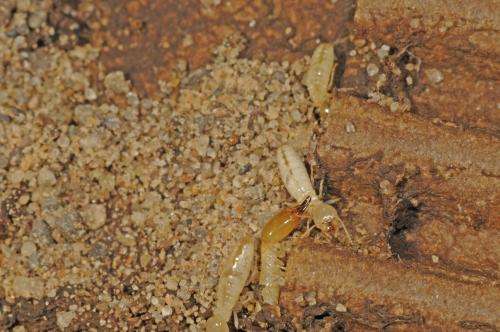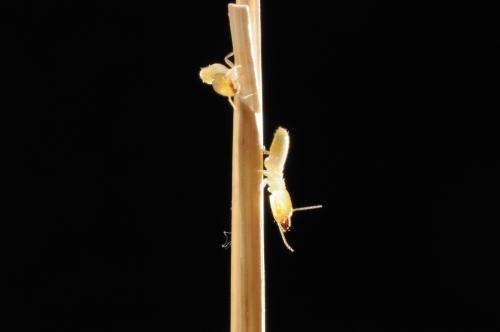Biologists bore into Canadian termite invasion

Scientists at Western University have discovered why termites wreak havoc on megacities like Toronto and Paris and how new findings may lead to possible pest controls.
In research published today in Environmental Entomology, Graham Thompson, a biology professor in Western's Faculty of Science, and his research team reveal that termite colonies have invaded Canada in three major waves over the past 75 years. Of concern to homeowners, colonies can grow "spectacularly huge," which Thompson believes is linked to their genes.
After collecting termites from across southern Ontario with the assistance of home owners and pest controllers, Thompson and his colleagues were able to determine the genetic code of each termite using microsatellite DNA analysis, a process which allows researchers to examine very small strands of DNA while looking for molecular variations between termites collected from different regions.
"No matter where you find termites in the GTA, they are all very similar genetically, almost like kin," explains Thompson, who notes the first major termite invasion to Canada was between 1935 and 1938 when contaminated shipping materials arrived at Polson Pier in Toronto from across Lake Ontario. "Their genetic similarity may prompt termites from different properties or even neighbourhoods to join together as if they were one big family."
Without genetic differences, the termite population becomes a super-colony that can spread quickly and aggressively across entire city blocks. Termites found in Elora, Fergus, Kincardine and parts of Guelph are from a second invasion while a third genetic group, are located at the southernmost point of mainland Canada near the municipality of Leamington.

"It means termites no longer live in small colonies," explains Thompson."Instead, they form subterranean societies that move underground like a giant, amorphous blob, which obviously makes them particularly difficult to eradicate."
Thompson, who says similar invasions have struck Paris, France, says if existing chemical pest controls are utilized to kill termites around a single home or business, the measure is often unsuccessful as the poison eventually loses its effectiveness and pests, from the millions in the surrounding supercolony, simply return to the property.
"Now that we have a better understanding of a termite's genetic makeup, future pest control applications may exploit the knowledge, creating something that can knock-out all termites in a city block, not just those from a particular household," offers Thompson, who also noted quarantine may be an option to prevent further invasions of termites into Canada.
Provided by University of Western Ontario















